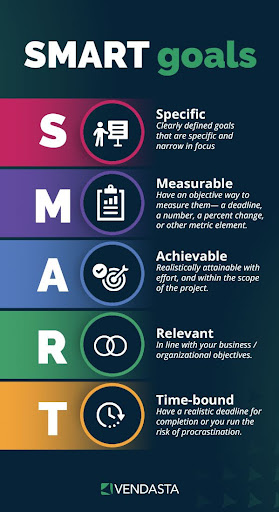Craft Roadmaps to Success With a Killer Marketing Project Planner
Marketing efforts of any scale tend to require the convergence of many skills, including those in the sales, creative, and administrative arenas. That alone can make managing marketing projects challenging without a detailed written plan. Having a templated marketing project planner ready to go when you launch each new effort can help streamline the planning process and strengthen your projects overall.
Learn trends and growth drivers in MSP space with 'Not another MSP handbook'. DOWNLOAD the eBook today.
A template keeps teams from getting caught up in ideas and processes and overlooking important elements of the plan. This guide digs deeper into the importance of a marketing project planner and provides tips for what it should include and how to create a solid project plan.
Importance of a marketing project planner
A project planner helps you align every marketing effort with your overall digital marketing strategy. This efficient and streamlined approach to planning helps you boost ongoing or startup agency revenue and protect critical metrics such as profit margins.
A well-defined project plan can ensure you:
- Set clear goals for your agency or for the marketing campaigns you create for clients
- Define target audiences appropriately for more cohesive marketing plans
- Allocate resources effectively so you can boost digital agency revenue without burning out internal teams
- Execute marketing projects in a timely manner and within budget
- Appropriately monitor marketing activities so you can make proactive changes and support continuous improvement
Essential components of a marketing project planner
While your marketing planner documents should be unique to your organization and client needs, some elements belong in most marketing plans. They include:
- Marketing strategy. Your plan should detail your overall strategy, including your message and what channels you use to deliver it.
- Target audience analysis. Include a deep dive into your target audience that identifies the interests, needs, and channels relevant to each segment.
- Budget allocation. When selling agency services online, ensure that your budget is allocated for marketing work. If you’re spending too much on various aspects of your plan—or spending more than the customer lifetime value—you could have a profitability issue. You also want to ensure more budget goes to channels and efforts that drive the most value.
- Timeline. Use visual elements to create a timeline for the project. A Gantt chart lets you visualize dependencies and how they might impact deliverable timelines, which can ensure you don’t rely on or promise work on untenable deadlines.
- Task allocation. Include a written plan for how the work will get done. This helps ensure you don’t overburden existing staff. Remember that you can white label to fill in digital agency staffing needs.
- Performance measurement metrics. Always define how you’ll measure success. Choose key performance metrics that align with the goals of each project.
Steps to creating a marketing project plan
Create a marketing project plan for each effort by following the steps below.
1. Conduct market research and competitive analysis
Start by doing some homework. Conduct research to understand:
- Where the market—and your agency or product—currently stands. Figuring out what the current baseline is helps you create realistic goals for the future.
- What competitors are doing. In some cases, you may need to outpace competitors with your marketing efforts to gain traction in the market, and that’s helpful to know at the start.
- Whether there are gaps you can leverage. If you find a gap in competitor marketing, it might represent low-hanging fruit you can target with your own campaigns.
- What challenges you might face. Identify challenges you must keep in mind as you move forward with planning.
2. Set SMART goals
Whether you’re marketing your services as a Google Workspace reseller or creating a client content plan, SMART goals are important.
As you create objectives for your marketing efforts, ensure each one can check the following boxes:
- Specific. Goals must be specific to the product, client, or marketing effort at hand.
“Improve revenue” is not a good goal because it’s too broad. “Drive a 10% increase in website traffic” is much more specific. - Measurable. Ensure you can measure success toward your goal. Identify marketing KPIs that work for this purpose and make sure you have access to the data needed to perform any KPI calculations.
- Achievable. Don’t set goals you don’t have the resources to achieve. If it normally takes 10 days to create and publish a blog post, don’t set a goal for publishing 20 in one month.
- Realistic or relevant. Be realistic about what’s possible—a goal of bringing every client page to the top three organic search results probably isn’t possible. Ensure your goals are relevant to the work at hand.
- Timely or time bound. Set time deadlines. For example, “Increase conversion rate by 3% quarter over quarter.”
3. Define your marketing strategy
Digital marketing offers many ways to connect with your target audience, but it’s not always feasible or even necessary to try to engage on every channel. Instead, define your strategy for each marketing effort. Consider:
- Who the target audience is, as this impacts where they tend to hang out online
- What the product is, as some products work better on various channels or via various media than others
- What your goals are, as that can inform which channels you need to concentrate on
4. Create a timeline and resource-allocation plan
Start sketching out a plan to use time and resources intelligently to meet your marketing goals. You can use Excel or project management software to make a Gantt chart to help you visually see these components.
If you’re struggling to see how you can “make ends meet” within your marketing plan, consider learning more about white label versus private label. You can also read our guide to white labeling to find out more about these options.
5. Detail a plan to monitor progress throughout the project
Don’t forget to include a plan for monitoring the project. This should include how the project team communicates with each other and stakeholders as well as parameters around necessary milestone check ins.
Dos and don'ts of creating a marketing project plan
Before you start working on your marketing project plans, here are a few final tips for success:
- Do involve key stakeholders. Talk to marketing leadership or clients about their expectations, and get sign-off on goals, budgets, and timelines before you start working to get all the details down. Set up communication workflows to keep decision-makers in the loop to avoid a project getting too far down the road without proper alignment.
- Don’t ignore input from subject-matter experts. Get feedback from those who deal with various marketing processes on a daily basis. They have the best idea of potential challenges and timelines.
- Do set realistic goals. Challenge your team, but don’t overburden them with impossible tasks. When setting goals, consider the performance of campaigns in the past, what your team has historically been able to accomplish in a set period of time, and other known benchmarks. It’s okay to try to rise above those, but if email open rates have always hovered around 15 percent, a goal of 50 percent is typically not realistic.
- Don’t overcommit your resources. Keep other projects and day-to-day business requirements in mind when planning. Avoid overloading your teams, as this can lead to quality issues or even loss of skilled employees. Remember that you can outsource or white label to scale your agency without relying completely on your busy in-house staff.
- Do create contingency plans. Don’t assume that everything will go exactly right. Plan for issues such as sick employees, software downtime, or a marketing campaign simply not working as well as you planned. Think about how to make your business recession proof in part by ensuring you always have a backup plan for marketing projects.
- Don’t overextend your budget. Be mindful of how much marketing efforts cost. Because so many marketing tactics, including content, SEO, and PPC ads, are ongoing and incremental, spend can add up before you realize it. Having a way to control spend is important to safeguarding agency profits.
- Do create your plan with an eye toward flexibility. Consider how you can be more agile when you offer marketing services or resell digital marketing resources and how your marketing plan needs room to support that agility.
Marketing project planner templates and resources
For more information about marketing project planners and downloadable templates to get you started, check out some of these resources:
- Our 10-step guide to creating your own digital marketing strategy. Explore the steps and tools required to create a digital marketing strategy that works.
- Get marketing plan templates from Team Gantt. These templates work in the Team Gantt solution and let you quickly convert your plan into helpful timeline visuals.
- Download a free marketing plan template for use in Microsoft Word. SCORE offers a free template you can download to build marketing plans, and it comes with internal instructions and guidelines that walks you through the entire process.




